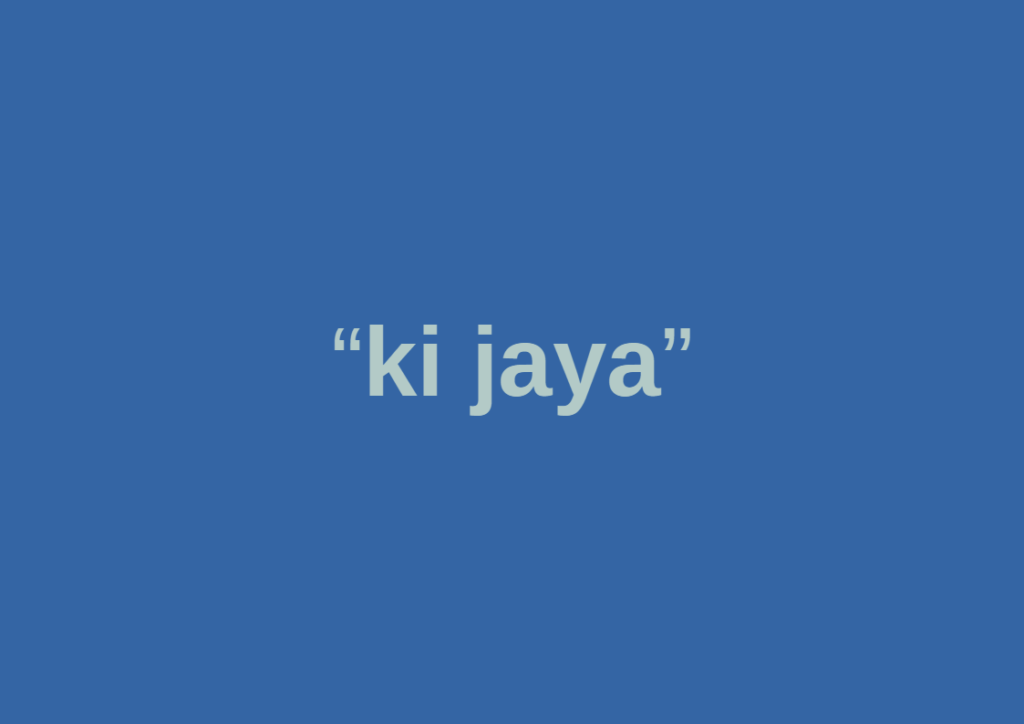What we chant in ISKCON’s daily program (continued)
Śrīla Prabhupāda’s Kīrtana Standards,” installment 36

The Prema-Dhvani (“Sounds of love”) are glorifications typically called out (in Hindi, by the way) at the end of a kīrtana. Śrīla Bhaktivinoda Ṭhākura includes one version of the Prema-dhvani in his Gītāvalī.1 And here is the way Śrīla Prabhupāda nearly always recited the Prema-dhvani:2
jaya oṁ viṣṇu-pāda paramahaṁsa parivrājakācārya aṣṭottara-śata śrī śrīmad bhaktisiddhānta sarasvatī gosvāmī prabhupāda kī jaya
ananta-koṭi vaiṣṇava-vṛnda kī jaya
nāmācārya śrīla haridāsa ṭhākura kī jaya
prem-se kaho śrī-kṛṣṇa-caitanya-prabhu-nityānanda śrī-advaita gadādhara śrīvāsādi-gaura-bhakta-vṛnda kī jaya
śrī śrī rādhā-kṛṣṇa go-gopīnātha śyāma-kuṇḍa rādhā-kuṇḍa giri-govardhana kī jaya3
vṛndāvana-dhāma kī jaya
navadvīpa-dhāma kī jaya
yamunā-mayī kī jaya
gaṅgā-mayī kī jaya
bhakti-devī kī jaya
tulasī-devī kī jaya
samaveta-bhakta-vṛnda kī jaya
All glories to the assembled devotees!
All glories to the assembled devotees!
All glories to the assembled devotees!
Thank you very much.
Śrīla Prabhupāda sometimes varied this a bit. Sometimes he would switch the order of Tulasī Devī and Bhakti Devī, or Gaṅgā-mayī and Yamunā-mayī. Sometimes, at the end, he would glorify a particular occasion (śrī śrī bhaktisiddhānta sarasvatī gosvāmī mahārāja kī tirobhāva tithi mahā-mahotsava kī jaya4). On one occasion he glorified his godbrother Śrīla B. R. Śrīdhara Mahārāja.5 Sometimes he would glorify a disciple.6 On one occasion in 1967, after a kīrtana on a San Francisco beach, he added “All glories to the Pacific Ocean!”7 But the sequence above is what he usually followed.
In ISKCON we naturally begin with glorification of Śrīla Prabhupāda:
jaya oṁ viṣṇu-pāda paramahaṁsa parivrājakācārya aṣṭottara-śata śrī śrīmad a. c. bhaktivedānta svāmī māhārāja prabhupāda kī jaya
Though we sometimes hear “bhaktivedānta gosvāmī,” this is technically incorrect. Śrīla Prabhupāda’s sannyāsa name is “swāmī,” not “goswāmī.”8 We also sometimes hear “abhaya caraṇāravinda.” No harm, but Śrīla Prabhupāda chose to style his name “A. C.” We also sometimes hear an added “His Divine Grace” and one or more added insertions of “Śrīla.” Again no harm, but one might choose to stick to the way Śrīla Prabhupāda did it, with no “His Divine Grace” and no added instances of “Śrīla.” (Oṁ viṣṇu-pāda paramahaṁsa parivrājakācārya aṣṭottara-śata śrī śrīmad includes all that and more.)
Though in ISKCON we naturally begin with glorification of Śrīla Prabhupāda, at home or in gatherings of grand-disciples it’s entirely fitting to begin with glorification of our own spiritual master, or the spiritual masters of the devotees present, and then Śrīla Prabhupāda, tracing the succession upward. At initiation ceremonies, of course, one should begin with glorification of the one or more spiritual masters initiating.
Sometimes devotees add the names of the temple Deities (or other Deities). Śrīla Prabhupāda did not. It is not a requirement. And the Prema-dhvani already includes “prem-se kaho śrī-kṛṣṇa-caitanya. . .” and “śrī śrī rādhā-kṛṣṇa go-gopīnātha. . .” So nothing more needs to be added.
I’ve sometimes been asked, When we do add the names of the Deities at the end of the Prema-dhvani, which is the correct order? Do we (as the tradition might expect) start with Gaura-Nitāi and proceed up to Rādhā-Kṛṣṇa? Or do we start with Rādhā-Kṛṣṇa and work our way down to Gaura-Nitāi and Śrīla Prabhupāda? Which way is right? Since Śrīla Prabhupāda did neither and it’s not part of the tradition, I have no “right answer” to give, other than “Why do it?”
There are two ways we may hear each glorification ended: either with “kī” (letting the responding devotees fill in the “jaya”) or with “kī jaya” (letting the responders call out “jaya” either with us or after us). I don’t know any rule about this. Śrīla Prabhupāda called out, “kī jaya!”9
Some devotees do end the Prema-dhvani with “Thank you very much,” and that’s fine But in ISKCON, for as long as I can remember, devotees typically end with something along the lines of “All glories to Śrī Guru and Gaurāṅga!” or “Gaura premānande hari haribol.” And that seems fine too.
In the Gauḍīya Maṭha the Prema-dhvani often goes on with glorifications at considerable length. So one may extend the glorifications. Or, like Śrīla Prabhupāda, one might keep them short and simple.
Notes:
1 https://bhaktivinodainstitute.org/prema-dhvani-2/
2 The example here comes from April 28, 1968, New York.
3 Members of the Gauḍīya Maṭha generally chant “gopī-gopa-go-gopīnātha.” We generally don’t care.
4 December 9, 1968. Los Angeles (CDV 10-1).
5 March 17, 1973.
6 Letter to Hayagriva Dāsa and Kirtanananda Swami, August 23, 1968.
7 Śrīla Prabhupāda-līlāmṛta, Volume 3, Only He Could Lead Them: San Francisco / India 1967.
8 “This Swami is my particular name as Sannyasi. Therefore, it must be suffixed at the end of my real name, A.C. Bhaktivedanta.” Letter to Rayarama, n.d.
9 One way or another, someone has to chant “Jaya!” “Kī jaya” means, roughly, “All glories to” whoever or whatever was just mentioned. “Jaya” means “victory” or “all glories,” and “kī” in this context means “to.” So merely “kī” alone is meaningless.

You must be logged in to post a comment.